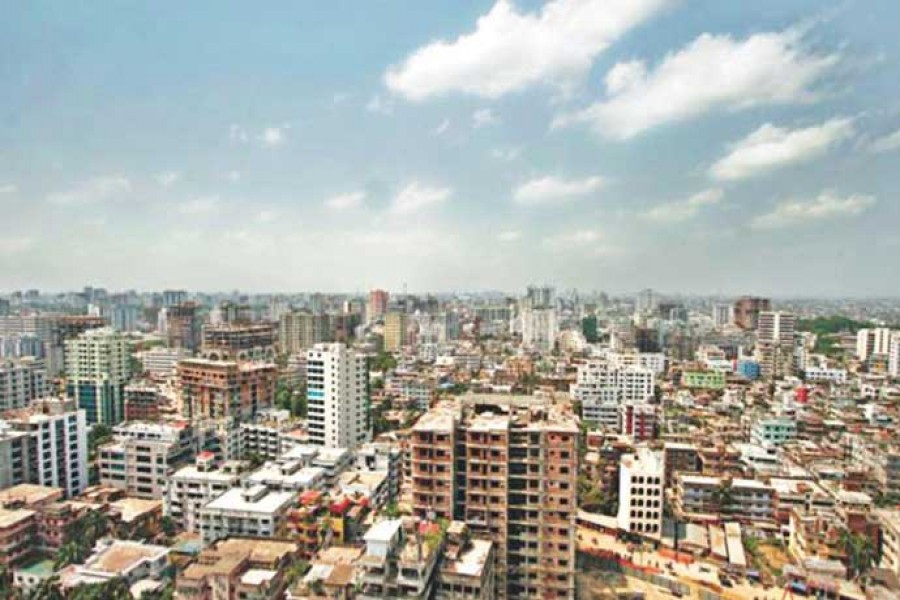A survey carried out as part of the Rajuk's Detailed Area Development Plan (DAP) process portrays a rather bleak picture of ward-wise densities of people in the megalopolis. It reveals that more than 90 per cent of the wards in the two city corporations of Dhaka have inhabitants beyond their capacity to sustain.
A few pertinent questions arise from the statement: First, are we to believe that the remainder ten per cent of the wards have a spare capacity to accommodate more people than they are currently doing? Secondly, what are the yardsticks by which the bearable capacity of a ward has been assessed. Obviously, this will be measured in relation to availability or otherwise of potable water, gas, electricity, drainage and other civic amenities.
The third, and the overarching question that needs to be answered by a competent authority is this: As the designated city development authority, has Rajuk been taking stock of the population of the wards periodically and relating them to levels of amenities projecting into the future to stay relevant as a nodal development planner and executer? If it has not done all these then whatever conclusions its studies or surveys might have drawn would be an academic exercise, and worse a fait accompli without the advantage of a timely warning sounded for arresting negative urbanisation.
It is a kind of stating the obvious that the 'excess' population load being carried by the wards creates traffic congestion and causes deterioration of civic services and plummeting of living standards. Hence our low ranking on global liveability index.
Ward No.46 of Dhaka South City Corporation (DSCC) has the densest population concentration. With an area of only 0.514 sq acres the ward's per acre density is an astonishing 1,379 persons. It outstrips the containing capacity of the ward by 9.2 times! The figure for ward No. 20 is the lowest per sq.acre viz, 63. As for Dhaka North City Corporation, at ward No. 34 density per sq. acre is 668 while ward No. 19 posts the lowest concentration of inhabitants -88 persons.
It is interesting to see what was meant as a remedy has itself turned problematic. According to urban experts, Dhaka-bound rush of people has propelled creation of living spaces through the building construction rules which in turn encouraged greater migration to Dhaka. Here is a case in point : While 2006 building construction rules permitted an applicant to build a seven-storey building on five Katha plot of land beside 30 feet -wide road, the set of rules in 2008 raised height of building to ten storey. In other words, whereas 14 families could be accommodated in seven-storied building, 22 families began to be housed in the ten-storied high-rise ones. If such an increase in accommodation is not matched by a rise in the level of civic amenities it will recoil by pushing the living standards down. On the other hand, you will have tempted people to crowd into the city as explained above.
The new city in Purbachal was supposed to accommodate ten lakh people but if the construction follows 2008 guidelines, more than 70 lakh people could be living there, precipitating a collapse of civic services.
Some experts have, however, rued the fact that the set of building rules were last amended in 2008; although a decade has passed since, the guidelines have not been updated.
Without a radical change in the settlement patterns (Dhaka is supposed to expand Eastward having an area comprising 166 unions) coupled with a vast improvement in the urban infrastructure including a big amenities complement, we cannot expect a sea-change in the fate of Dhaka. Building a string of growth epicentres could ease the pressure off Dhaka.
In this overall perspective, "Density Zoning" being proposed in the DAP may be just another burst of tokenism.


